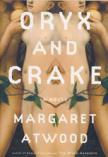In Their Own Image
Margaret Atwood’s last novel, The Blind Assassin, won the millennial Booker Prize, for most writers a once-in-a-lifetime award, Salman Rushdie notwithstanding. Three years later she is back with a rather different kind of book, more reminiscent of The Handmaid’s Tale, an earlier dystopian novel in which all the advances of the feminist movement are cruelly reversed in some future and more primitive age. Now she has raised the stakes even higher. Oryx and Crake chronicles the making of a supposed paradise, based on genetic manipulation raised to the nth degree. Not surprisingly, disaster ensues. Which is where the story begins.
Atwood cleverly gives the narrative role to a character called Snowman, who we soon learn is Jimmy, the childhood best friend of the story’s Dr. Frankenstein and the origin of his nickname, Crake. Jimmy is also the inheritor of Crake’s world and Crake’s “children,” the perfectly engineered successors to the human race. They in turn regard Jimmy alternately as a monster to be avoided and as a shaman who alone can tell them of their origin and explain the disaster that has overtaken the world into which they have been so rudely introduced.
Crake makes his appearance in Jimmy’s life shortly before his mother flees from the compound into the “pleeblands,” abandoning him and his father; but over the years she occasionally sends him anonymous postcards from exotic points, as much to tweak the security forces as to keep in touch. Ironically, she liked Crake, thought him “intellectually honorable” and wished her son could be more like him. To his credit, Jimmy never succeeded.
From the beginning of their friendship, Jimmy plays second string. Crake is the brainy one, always a step ahead, even of his teachers. He is both dreamer and technician, with a passion to push technology as far as it will go in the interests of creating a new and improved species of homo sapiens. He is also, as Jimmy discovers, utterly ruthless.
Oryx is initially just an Asian face on a porno site, another victim of sexual predators, East and West; but something about her arrests both young men, and Crake downloads her picture. In time she will become Jimmy’s enigmatic great love and Crake’s partner in creating his new race.
As you will have guessed by now, this is a novel of ideas rather than of characters, a contemporary 1984 in which the villains wear white coats and splice genes. Just as George Orwell extrapolated from the practices of Nazi and Soviet apparatchiks to shape his political dystopia, and Aldous Huxley took his cue from contemporary biologists, Atwood has used the genome to imagine her own “brave new world.” What they all have in common, of course, is the concentration of power and wealth in the hands of a few super corporations run by self-styled geniuses determined to shape the world in their own image. Living in compounds secure beyond the wildest dreams of our own gated communities, these elites work unfettered, are rewarded extravagantly for their ideas and relish the power they wield. Meanwhile the rest of the world festers and burns around them, glimpsed only occasionally from bullet trains that speed their masters to other equally secure bubbles.
This is Crake’s world, and he has honed his bureaucratic skills to a razor-like perfection that has given him ultimate power. He welcomes Jimmy back into it after his long exile writing ad copy for the latest miracle drug or sex toy. By this time “Crake’s children” have been created with Oryx as their nurse and soon-to-be mother goddess. Unhappily for Crake, his plan to eliminate the earth’s current inhabitants with a cunning birth control/sex enhancer (BlyssPlussPill) laced with pathogens backfires. Millions are infected and riots sweep the world, taking down even Crake’s well-defended compound. Only Jimmy, the ultimate loser, survives to take up his role as Snowman.
I began reading this novel on the day the government last raised the alert level from yellow to orange. It is now back to yellow, but the Middle East is still in turmoil, and North Korea is rattling its nuclear missiles again. And what, I wonder, are the bio-scientists and their corporate masters cooking up for our future?
This article also appeared in print, under the headline “In Their Own Image,” in the August 18, 2003, issue.








